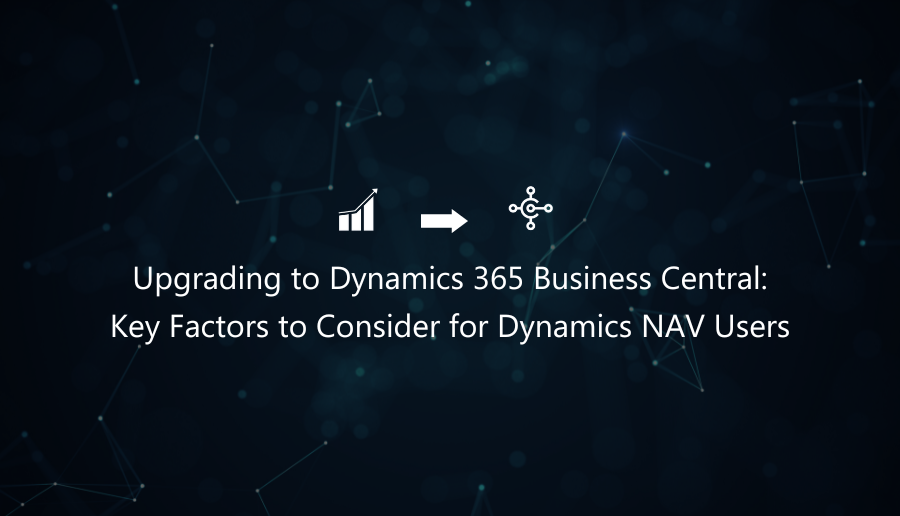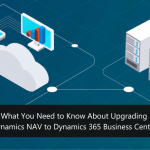
If you’re a financial professional or business owner who has been using a version of Dynamics NAV for your business, you know it’s time to upgrade. Microsoft has already discontinued its mainstream support earlier this year and will be extending support until 2028.
However, they are urging users to evaluate the upgrade options early in order to receive the necessary support and access to future enhancements. If you delay the upgrade, it could potentially cause a major disruption to your business when you’re forced to move.
Deciding on the right path can be challenging when it comes to upgrading Dynamics NAV. This process involves selecting the appropriate architecture and ensuring compatibility with other systems, which can be complex. It’s common to feel apprehensive about the potential risks associated with a significant software upgrade, such as implementation delays, exceeding budget, and data integrity concerns. In this discussion, we will explore different upgrade options for Dynamics NAV, enabling you to make an informed decision.
Option #1- NAV Technical Upgrade
One option to consider is a technical upgrade from Dynamics NAV to Dynamics 365 Business Central in which you’ll migrate all the past data transactions and customizations, ensuring that everything from your original system is included in the updated version. This approach can be more suitable for you if you fall in the following scenarios:
Extensive Customizations
If your business relies on intricate and extensive customizations that still serve your specific needs, it might not make practical sense to re-implement these customizations within Business Central. This is because your company may need a more tailored business process that Business Central might not entirely cover – this is where ISV add-ons come into play. Opting for an upgrade allows you to retain these existing customizations while seamlessly migrating all historical transactions and master records (including, but not limited to, Customers, Items, Vendors, and the Chart of Accounts). In the upgraded version, this data is smoothly transitioned and integrated into the framework of Business Central. In the upgraded version, this data is migrated and fit into the terms of Business Central, while all customizations are brought forward and refactored into the new code base if they do not simply compile with existing tools.
Requirements and Processes
In instances where your business requirements and processes have remained largely stable since the implementation of NAV, and where these established procedures effectively meet your needs, an upgrade offers a streamlined pathway. By upgrading, you ensure that your tried-and-true operations align smoothly with your current technology landscape. This approach saves you from unnecessary overhauls while optimizing your system’s compatibility with modern tools, enhancing operational efficiency and maintaining business continuity.
Retain Historical Data
For example, preserving historical data is crucial for companies in regulated industries or those needing detailed audit trails. If your business falls into these categories, upgrading from Dynamics NAV to Dynamics 365 Business Central is a logical decision. This upgrade guarantees the smooth continuation of your historical data, transactions, and important records, ensuring compliance and offering a comprehensive overview of your business’s progress. By following this upgrade path, you can maintain data integrity while taking advantage of the advanced features and continuous support provided by Dynamics 365 Business Central.
Budget Constraints
Re-implementing requires a substantial investment in terms of time, resources, and costs. If you’re constrained by a limited budget, transitioning your existing data from Dynamics NAV to Business Central can offer a more economically efficient solution, especially considering that this is a straightforward upgrade and marks the final major transition. Once you’re on Business Central, you’ll benefit from automatic biannual upgrades at no extra expense.
Time Sensitivity
Re-implementing an ERP system can be a time-consuming process, involving data migration, configuration, and testing. This becomes particularly crucial when time is a significant factor, such as during peak business seasons or scenarios where immediate system access, as well as seamless integration and compatibility with existing technology, are essential for ensuring uninterrupted business operations.
Option #2- Re-implementation
Another option would be to start from scratch and re-implement your ERP system. Here are the scenarios in which re-implementation may be best for your organization:
Significant Process Changes
If your business has undergone significant process changes or restructuring since the initial Dynamics NAV implementation, a re-implementation can be an opportunity to realign your ERP system with the updated processes. This is especially relevant when what previously worked no longer aligns with your current business needs. For instance, outdated processes may hinder operations, necessitating a fresh approach that the re-implementation can cater to, leading to greater operational efficiency and effectiveness.
Enhancing Reporting Accuracy
Consider re-implementation when historical data within your current Dynamics NAV system has become too outdated or unreliable for accurate reporting. In such cases, upgrading might simply carry forward erroneous or obsolete data. Opting for re-implementation offers the advantage of starting with a clean slate, ensuring that your reporting is built on a foundation of accurate and up-to-date data, leading to more informed business decisions.
Improve Efficiency and Performance
In scenarios where your existing processes have slowed down due to the volume of data or complex customizations within your Dynamics NAV system, re-implementation provides a chance to streamline and optimize. By reimagining and redesigning workflows, you can eliminate bottlenecks and inefficiencies that have accumulated over time. This rejuvenation ensures that your new system operates at peak efficiency, empowering your team to work faster and smarter.
Streamlining Migration Steps
If your current Dynamics NAV version is significantly outdated, the process of upgrading might involve navigating through several intermediate versions before reaching Dynamics 365 Business Central. However, with re-implementation, you have the opportunity to skip this step and directly transition to the latest technology. This approach minimizes complexity, saves time, and reduces potential issues associated with migrating across multiple versions, allowing you to embrace the benefits of Business Central more swiftly.
Partnering with TMC for a Seamless Transition
Regardless of which path you take, upgrading from Dynamics NAV is a critical step that will significantly enhance your work efficiency. Microsoft’s discontinuation of mainstream support and the potential for major disruptions highlight the need for this upgrade.
When you work with a trusted Microsoft partner like Technology Management Concepts (TMC), we offer a comprehensive review of your current business processes to ensure that you choose the most appropriate option within your budget and business goals. We’ll guide you through the entire upgrade or re-implementation process, ensuring a seamless transition and addressing any concerns. Our team of experts will assist with evaluating your specific needs, providing a tailored migration plan, and supporting you during and after the upgrade.
Take the next step and contact us for a Business Process Review or consultation. Let us help you make an informed decision, get back on track quickly and securely, and unlock the full potential of your ERP environment.







